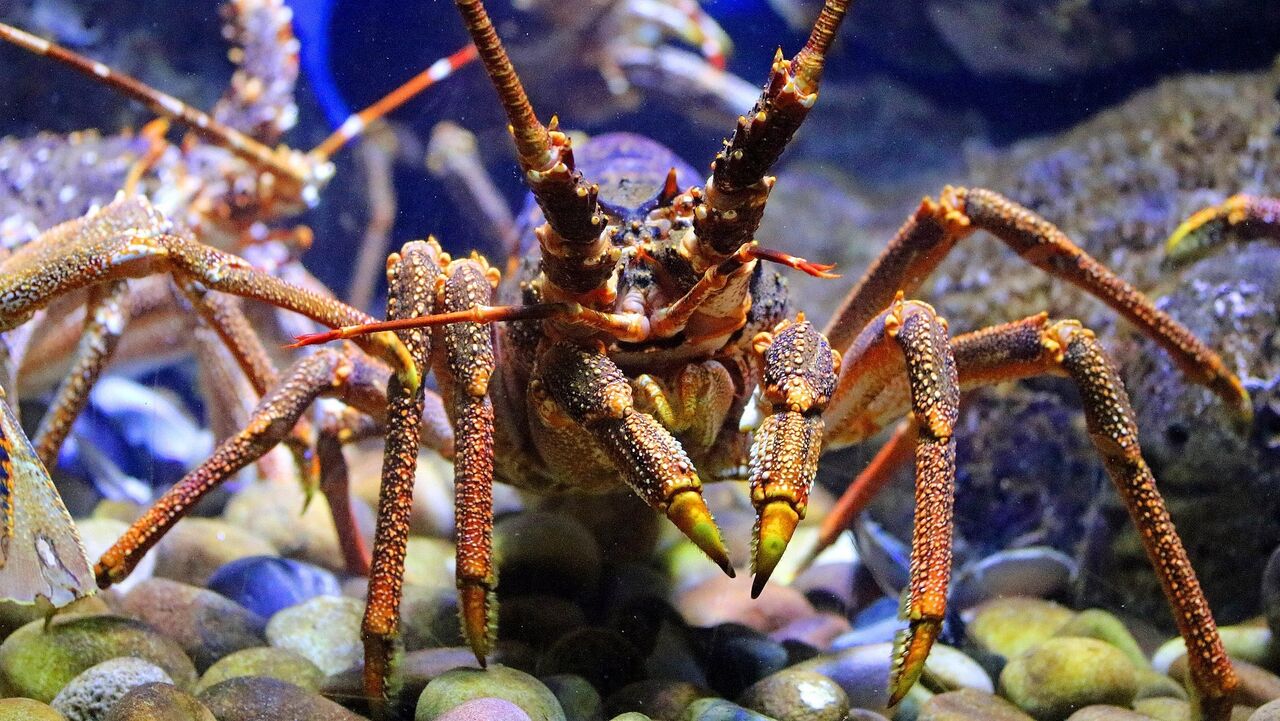Appearance and lifestyle:
The St Paul rock lobster (Jasus paulensis) is a large crustacean specie that can grow up to 37cm long. They look very similar to our local crayfish species, the West Coast rock lobster (Jasus lalandii), or “kreef” – both species display orange-brown spines and have similarly slow growth rates.
The St Paul rock lobster belongs to a family called Palinuridae – or “crayfish” as we like to call them here in South Africa. They differ from true lobsters (family Nephropidae) in one major way – rock lobsters do not have pincers! Rock lobsters also have large spiny antennae and often have spikes on their carapaces. The most striking difference between rock lobsters and true lobsters is when they are young – rock lobsters first grow as a “phyllosoma” before taking on their adult body shape.
Habitat:
The Aquarium's St Paul rock lobsters are all the way from the island of Tristan da Cunha in the south Atlantic Ocean. These lobsters are so famous there that they are actually on the island's coat of arms!
Diet:
St Paul rock lobsters are nocturnal scavengers, hiding in cracks and caves on the rocky sea floor and coming out at night to feed on seaweed and carrion.
Threats:
Unlike the St Paul rock lobster, the West Coast rock lobster population is not considered stable. The species has been added to the WWF SASSI red-list – consumers should not eat kreef.
